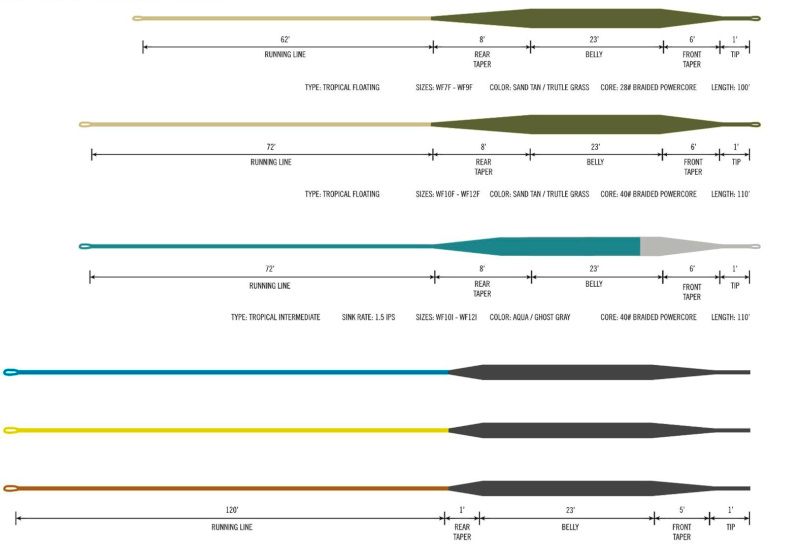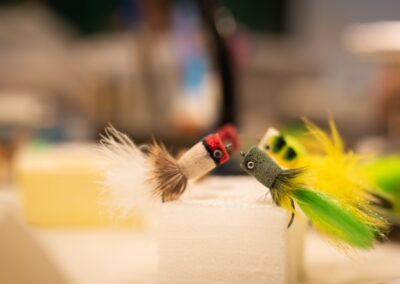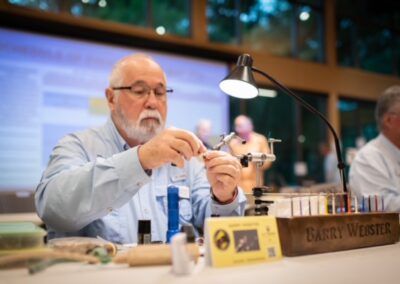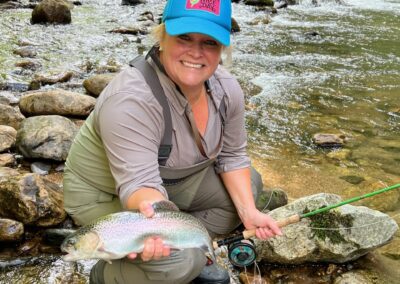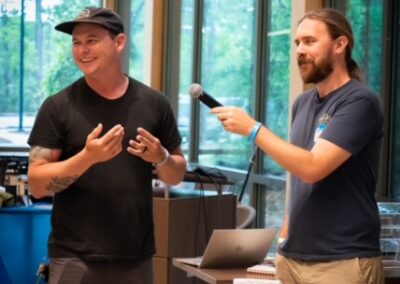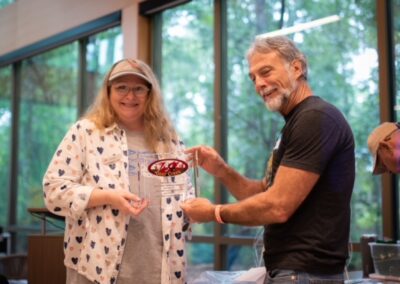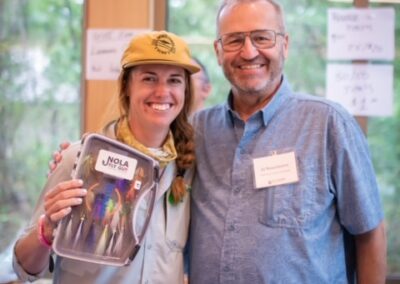Monofilament or Fluorocarbon?
So many choices! Photo: Kyle Shea
 While fluorocarbon leader and tippet materials are no longer a new discovery in the fishing scene, lots of us are still uncertain of the difference between newer fluorocarbon and traditional nylon monofilament. If you are in this category, before stocking up on tippet spools for the coming season, keep reading and we’ll try to clear up the differences between the two.
While fluorocarbon leader and tippet materials are no longer a new discovery in the fishing scene, lots of us are still uncertain of the difference between newer fluorocarbon and traditional nylon monofilament. If you are in this category, before stocking up on tippet spools for the coming season, keep reading and we’ll try to clear up the differences between the two.
First off, don’t be fooled by the substantially higher price tag on fluorocarbon materials when compared to monofilament. Many anglers reach for fluorocarbon under the assumption that because it is more expensive, it is a superior choice of line. While there are many superior qualities of fluorocarbon, both fluorocarbon and monofilament have their place depending on the situation. The higher price of fluorocarbon is as much a result of the manufacturing process as it is the “fishing value.” When comparing leader and tippet materials, there are a few qualities that are of utmost importance – read on.
Visibility
The visibility, or better put, the “invisibility” of fluorocarbon line is most likely the best selling point of fluorocarbon when compared to standard nylon monofilament line. The light refractive index of fluorocarbon is very similar to that of fresh water (much more so than monofilament). In other words, when placed in water, it is less visible than monofilament.
Not convinced? You can see for yourself. Take strands of equal diameter of both fluorocarbon and monofilament and dip them in a glass of water. Notice the difference in transparency of the materials in water.
Strength
When talking about strength, there are several dimensions to consider. In the short term, fluorocarbon is a much harder material than monofilament. This results in higher abrasion resistance that is useful in situations such as nymphing or fishing around heavy structure. Also, most fluorocarbon line is thinner in diameter than monofilament line of the same breaking strength. However, this is not always the case from company to company.
Fluorocarbon is also non-permeable to water and therefore does not absorb water throughout the fishing day. This may not seem like a big deal but most do not realize how much water nylon monofilament actually absorbs throughout the day. Over time, this causes monofilament to weaken.
Over the long term, fluorocarbon is extremely resistant to the elements as well, unlike monofilament. Overtime, U.V. rays, rain and humidity, and extreme temperatures (both hot and cold) can cause monofilament to break down and lose strength. Fluorocarbon is much more resistant to these conditions over the long term. For most of us, these conditions are the norm during a fishing day. This is worth considering before pulling out that dusty tippet spool you bought on sale two years ago.
On that note: due to the fact that fluorocarbon does not break down very readily, please take care when disposing of it. Any pieces clipped off and thrown into the river will be there for a very, very long time.
Density
For you trout fisherman out there, the density of your leader material is actually very important. Fluorocarbon is actually denser than water. In other words, it sinks. This is great when dredging the bottom with nymphs or stripping streamers. However, if dead drifting or skating flies on the surface, this is the last thing you want. Nylon monofilament on the other hand actually suspends in water. If fishing dries, especially in very small sizes, monofilament is a clear winner here.
Stretch
Most anglers are aware that monofilament is a relatively “stretchy” material. Just grab your leader from both ends and pull; you will see it stretch. While a certain degree of stretch is advantageous to help absorb the shock while fighting a fish, less stretch results in higher sensitivity for detecting those subtle takes. Fluorocarbon is said to have less stretch than most nylon monofilaments, however there has been some debate among differing manufacturers.
Knotability
Knotability is often overlooked by anglers when selecting a leader or tippet material, but it is very important. The knot is always the weakest link in your setup and therefore it is important to choose a material that knots well.
Nylon monofilament is far superior here as it is suppler than fluorocarbon. For this reason, nylon monofilament is often the choice when tying big game leaders that require extremely large diameter lines. Due to the stiffness of fluorocarbon, knots do not always seat as easy and must be coaxed into lying just right. Take your time when tying knots into fluorocarbon materials and ensure the knot seats correctly to avoid knot slippage or breakage.
Summary
While fluorocarbon seems to have a great deal of advantages over tradition monofilament, there are certain situations where the extra cost is not necessary. Evaluate what situations best fit you and buy accordingly. Also, it is important to mention that not all materials are created equal. Fluorocarbon or monofilament is often times very different between competing manufacturers.

